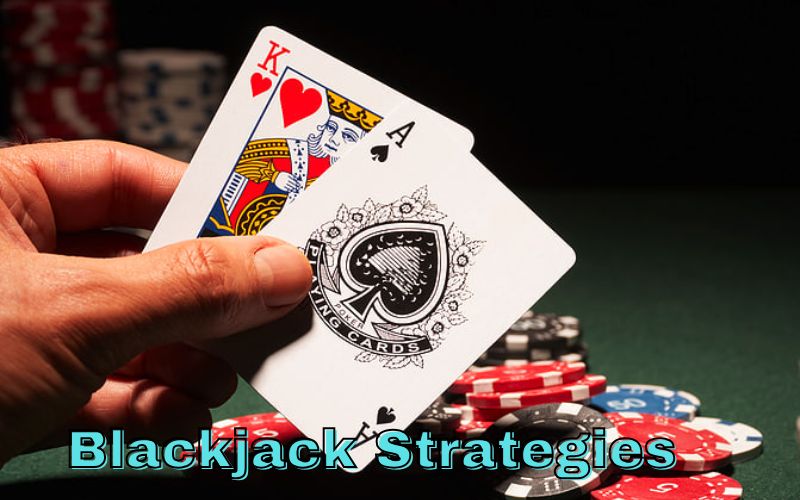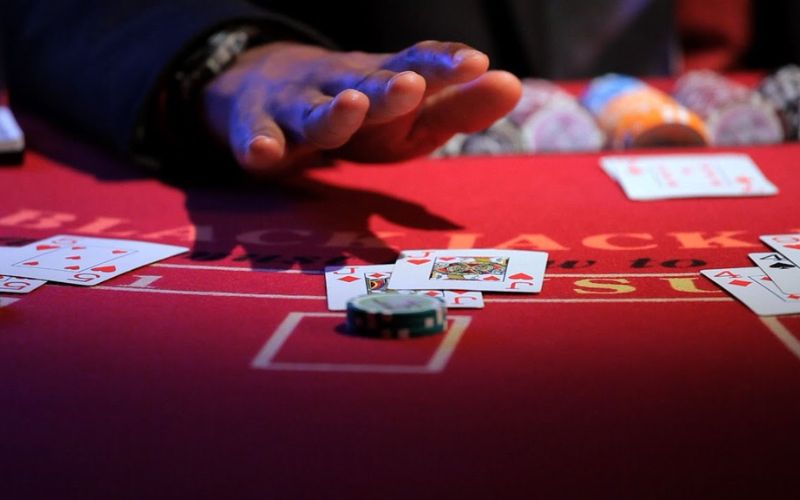Blackjack is one of the most popular and exciting card games in casinos around the world. The game combines skill, strategy, and luck, making it both a thrilling experience and an attractive opportunity for players to win. Whether you’re a novice or a casual player looking to improve your chances of success, mastering the basic strategies for Blackjack strategies can make a significant difference in your gameplay. This ultimate guide will walk you through everything you need to know about Blackjack strategies for beginners.
Understanding the Basics of Blackjack Strategies
Before diving into strategy, it’s important to understand the basic rules of Blackjack strategies. The game is usually played with one or more decks of cards. The goal is to have a hand value as close to 21 as possible without exceeding it. The cards 2 through 10 are worth their face value, the Jack, Queen, and King are each worth 10 points, and the Ace can be worth either 1 or 11 points, depending on the situation.
In a typical game, you are playing against the dealer, not other players. The dealer deals two cards to each player, including themselves. Players can then choose to “hit” (take another card) or “stand” (keep their current hand). If the player’s hand exceeds 21, they “bust” and lose the round. If the dealer busts, the remaining players win.
Understanding these basic mechanics is crucial because every strategic decision you make during the game will be based on the value of your hand in relation to the dealer’s face-up card.
The Importance of Basic Blackjack Strategies
One of the key elements to success in Blackjack strategies is making the right decisions based on the hand you have and the card the dealer is showing. The best way to improve your chances is to adopt basic Blackjack strategies. Basic strategy is a set of rules that tells you the best possible move to make for every situation in the game. These strategies have been mathematically derived to minimize the house edge and maximize your chances of winning.
Let’s take a closer look at the fundamental strategies you should consider as a beginner.
Know When to Hit or Stand
The decision to “hit” or “stand” is the most basic and frequent choice in Blackjack strategies. If your hand is weak and you’re unlikely to win against the dealer’s hand, hitting (taking another card) may be your best option. If your hand is strong, standing (not taking any more cards) might be the safer choice.
When to Hit:
- If your hand is valued at 8 or less, always hit.
- If you have a hand between 12 and 16, and the dealer’s face-up card is 7 or higher, it’s better to hit.
- If you have a hand between 12 and 16, and the dealer has a face-up card valued at 2 through 6, it’s better to stand.
When to Stand:
- If you have a total of 17 or higher, stand regardless of the dealer’s card.
- If your hand is a “soft” 17 (a hand with an Ace counted as 11), it’s better to stand against the dealer’s weak card (2 through 6).
- If the dealer shows a 2 through 6, you should stand on a hand of 12 or higher because the dealer is likely to bust.
Understand Doubling Down
Doubling down is a powerful in Blackjack strategies that allows you to double your initial bet in exchange for committing to take only one more card. This move is particularly useful when you have a strong starting hand and are confident that one more card will give you a winning hand.
When to Double Down:
- If you have a total of 11, double down if the dealer shows anything except an Ace.
- If you have a total of 10, double down if the dealer shows a 2 through 9.
- If you have a “soft” 16, 17, or 18 (an Ace counted as 11), double down when the dealer shows a 2 through 6.
Doubling down should be used strategically and when the odds are in your favor, as you’re committing to a larger bet with the expectation of winning.
Splitting Pairs
Splitting pairs is another strategy that can increase your chances of winning. When you are dealt two cards of the same rank, you can choose to split them into two separate hands and continue playing them individually.
When to Split:
- Always split Aces and 8s. Splitting Aces gives you a better chance of hitting 21, and splitting 8s gives you a chance of improving a weak 16 into two stronger hands.
- Split 2s and 3s when the dealer’s card is 2 through 7. This gives you a better opportunity to improve your hand.
- Split 6s if the dealer is showing a 2 through 6, as this gives you a good chance to improve your hand without busting.
When Not to Split:
- Never split 10s or face cards. A pair of 10s already gives you a strong 20, and splitting them reduces your chances of winning.
- Avoid splitting 5s. A total of 10 is a strong hand, and splitting it weakens your position.
Understanding the Dealer’s Play
In Blackjack strategies, the dealer also has to follow specific rules when it comes to hitting and standing. The dealer’s actions are generally determined by the total value of their hand. They must hit if their hand is valued at 16 or less, and they must stand on 17 or higher. This gives you valuable insight into how to adjust your strategy.
If the dealer’s upcard is 2 through 6, they are in a weaker position because they are more likely to bust. In such cases, it’s usually better for you to stand on a hand of 12 or higher, as the dealer may bust. On the other hand, if the dealer has a 7 or higher, their hand is stronger, and you’ll need to be more cautious about your choices.
Card Counting – Advanced Strategy
Card counting is a strategy used by more advanced players to determine whether the next hand is likely to give an advantage to the player or the dealer. The basic concept involves keeping track of the high and low cards that have been dealt, which can give you an idea of what cards are left in the deck.
How Card Counting Works: Card counters assign a value to each card:
- Cards 2-6 are counted as +1
- Cards 7-9 are counted as 0
- Cards 10, face cards, and Aces are counted as -1
By maintaining a “running count” based on these values, you can adjust your betting strategy. A positive count suggests that more high cards remain in the deck, which favors the player, while a negative count suggests that more low cards remain, which favors the dealer.
Although effective, card counting is difficult to master and is not recommended for beginners. It also requires a lot of practice and can be easily detected by casinos, so it’s not a viable option for casual players.
Manage Your Bankroll
One of the most important aspects of any gambling game, including Blackjack strategies, is bankroll management. It’s essential to set a budget before you start playing and stick to it. Decide how much money you are willing to lose and never exceed that amount. Additionally, adjust your bets based on your winning or losing streaks to avoid large losses. Stick to conservative bet sizes and avoid getting caught up in the excitement of the game.
Discover the simple steps to download and enjoy Classic Rummy on your device with our easy-to-follow guide. Don’t miss out on the fun—check out our post on how to get started with Classic Rummy APK!
Conclusion
Mastering Blackjack strategies as a beginner involves learning the basic strategies, understanding when to hit, stand, double down, and split, and staying aware of the dealer’s tendencies. By practicing these techniques and following sound bankroll management principles, you’ll be able to maximize your chances of winning and enjoy the game to the fullest.
Remember, Blackjack strategies is a combination of skill and luck, and while you can’t control the cards you’re dealt, you can control the decisions you make. By honing your strategy and staying disciplined, you’ll be well on your way to becoming a successful Blackjack strategies player. Keep practicing, and most importantly, have fun!
FAQs
Why should beginners learn Blackjack strategies?
Learning basic Blackjack strategies helps beginners make better decisions, reduce the house edge, and improve their chances of winning. By understanding the odds, betting strategies, and playing tactics, players can make more informed choices, resulting in a more enjoyable and potentially profitable experience.
What is a Blackjack card counting system, and should I use it?
Card counting is a technique where players keep track of the high and low cards that have been dealt to determine the likelihood of getting favorable cards. While it can increase your odds, many casinos watch for card counters and may ask them to leave. For beginners, it’s not recommended to focus on card counting, as it can be difficult to master without significant practice.
What does it mean to “double down” in Blackjack?
Doubling down means you double your original bet and receive only one more card. It’s a great strategy when you have a strong hand (like 11) and the dealer has a weak card, allowing you to increase your potential winnings.








